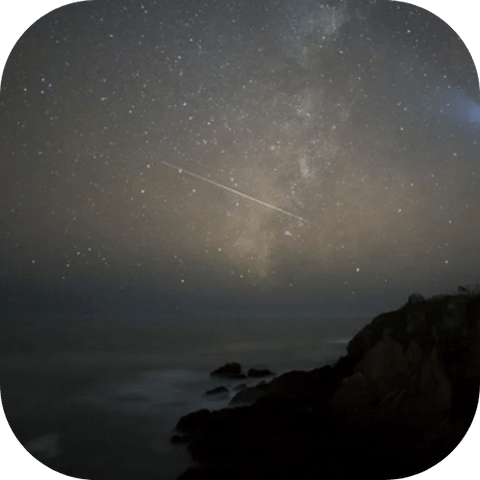October is here which means there are only two months left before the close of 2023. If there's one thing to make sure to hit on your 2023 bucket list, it is to make sure you witness this month's Annular Solar Eclipse on October 14th.
Prior to the main event, October opens up with Asteroid 29 Amphirite at opposition and a great placement in the sky of the Andromeda Galaxy on the 2nd.
Later in the month, the Triangulum Galaxy appears high in the night sky on the 15th, dwarf planet Eris reaches opposition on the 18th, and the Orionids meteor shower hits its peak on the 21st.
The month ends with a spectacular view of the Perseus Double Cluster on the 27th just before the Full Hunters Moon on the 28th appears.
(Looking to review last month's astronomy events? View September 2023)
Our highlighted list of astronomy events for October serves as your reference for key celestial targets to plan for.
8 Astronomical Events in October 2023:
- Asteroid 29 Amphitrite at opposition - 10/2
- Andromeda Galaxy is well placed - 10/2
- Annular Solar Eclipse - 10/14
- Triangulum Galaxy is well placed - 10/15
- Eris at opposition - 10/18
- Orionids meteor shower peak - 10/21
- Perseus Double Cluster is well placed - 10/27
- Full Hunters Moon - 10/28
For easy navigation, click an event listed above to go directly to that section of the article. Below, we will explore each of these events in greater detail.
Astronomy events to mark on your October 2023 calendar:
October 2nd - Asteroid 29 Amphirite at opposition

On Monday, October 2nd, asteroid 29 Amphirite will be at opposition and reach its highest point in the sky around midnight local time.
A celestial object "at opposition" refers to its 180° position opposite to the Sun. During this alignment Amphirite will rise at around sunset, and set at around sunrise.
Amphirite will pass within 1.426 AU of us, shining at magnitude +8.8 in the Pisces constellation. You will need a moderate aperture telescope or a pair of binoculars for observation.
Amphirite at opposition
- Magnitude: +8.8
- Right ascension: 00h27m50s
- Declination: 5°23'N
- Constellation: Pisces
October 2nd - Andromeda Galaxy is well placed

The Andromeda Galaxy, also known as M31, will reach its highest point in the sky at around midnight local time on Monday, October 2nd.
From a dark site, you may be able to see this barred spiral galaxy with the naked eye. However, a small aperture telescope or a pair of binoculars will provide greater visibility.
M31 is the nearest major galaxy to the Milky Way and lies approximately 2.5 million light-years from Earth.
Andromeda Galaxy on 10/2
- Magnitude: +3.4
- Right ascension: 00h42m40s
- Declination: 41°16'N
- Constellation: Andromeda
October 14th - Annular Solar Eclipse

The main event of the month will occur on Saturday, October 14th, from approximately 11:05am to 4:55pm EST in the Americas (depending on your exact location). The Moon will visibly pass in front of the Sun creating an annular solar eclipse.
A solar eclipse is an astronomical event that occurs when the Moon crosses the ecliptic plane at a lunar node during the new phase of its 29.5 day cycle. At that moment, from our perspective on Earth, the Moon and the Sun appear to be positioned at the same ecliptic longitude.
Unlike a total solar eclipse that is created when the Moon completely obscures the Sun, an annual solar eclipse occurs when the Moon is in line with the Sun but appears smaller in size. This slight difference in size of these two celestial objects causes an annular eclipse to display a bright ring sometimes referred to as the "ring of fire".
Sun at eclipse
- Right ascension: 13h16m
- Declination: 8°07'S
- Angular size: 32'04"
- Constellation: Virgo
October 15th - Triangulum Galaxy is well placed

On Sunday, October 15th, the Triangulum Galaxy (M33) will reach its highest point in the sky at around midnight local time.
Shining faintly at magnitude +5.8, you will need a small aperture telescope or a pair of binoculars to view this spiral galaxy.
M33, sometimes referred to as the Pinwheel Galaxy, is located approximately 2.73 million light-years from Earth.
Triangulum Galaxy on 10/15
- Magnitude: +5.8
- Right ascension: 01h33m50s
- Declination: 30°39'N
- Constellation: Triangulum
October 18th - Eris at opposition

The dwarf planet designated 136199 Eris will be at opposition and reach its highest point in the sky around midnight local time on Wednesday, October 18th.
A celestial object "at opposition" refers to its 180° position opposite to the Sun. During this alignment Eris will rise at around sunset, and set at around sunrise.
Eris will be positioned 94.75 AU of Earth, dimly lit at magnitude +18.6 in the Cetus constellation. Therefore, a large aperture telescope will be required to view this distant object.
Eris at opposition
- Magnitude: +18.6
- Right ascension: 01h47m40s
- Declination: 0°46'S
- Constellation: Cetus
October 21st - Orionids meteor shower peak

The Orionids meteor shower is active from September 26th to November 22nd. It reaches its peak on Saturday, October 21st. Its radiant point, the area from which the shower appears to emanate, is positioned in the Orion constellation around right ascension 06h20m and declination 16°N.
According to the American Meteor Society, this meteor shower's ZHR will be approximately 20 meteors per hour. ZHR is an abbreviation for Zenithal Hourly Rate and is defined as the hourly rate at which a meteor shower produces with a clear, dark sky, and with the radiant at the zenith (highest point directly above the observer).
The parent body responsible for creating the Orionids shower is comet 1P/Halley.
Tips for viewing meteor showers:
- Do not direct your gaze solely at the radiant point. The closer a meteor is in proximity to its radiant point, the more difficult it is to see because of its shorter trail.
- Position yourself in a dark, secluded location away from light pollution and bright city lights.
- Allow for up to 30 minutes for your eyes to properly adjust to the dark environment.
- Make sure to dress appropriately for the weather.
- Bring a comfortable lawn chair in which you can recline or a blanket to lie back on.
- Try to observe as wide an area of the sky as possible. The broader your view of the sky, the greater the chance of catching a glimpse of a meteor whizzing by.
October 27th - Perseus Double Cluster is well placed

On Friday, October 27th, the Perseus Double Cluster (NGC 869 and NGC 884) will reach its highest point in the sky at around midnight local time.
Shining at magnitude +4.3, you will need a small aperture telescope or a pair of binoculars to view this open star cluster.
The Perseus Double Cluster, sometimes referred to as Caldwell 14, is located approximately 7,500 light-years from Earth.
Perseus Double Cluster on 10/27
- Magnitude: +4.3
- Right ascension: 02h20m00s
- Declination: 57°08'N
- Constellation: Perseus
October 28th - Full Moon | Hunters Moon

On Saturday, October 28th, the Moon will reach the full phase of its 29.5 day lunar cycle rising at around dusk and setting at around dawn. This astronomical event occurs each time the Moon's ecliptic longitude appears 180° away from the Sun's ecliptic longitude.
According to the Farmers' Almanac, traditionally the Full Moon that occurs after the Fall Harvest Moon is referred to as the Hunters Moon. It is believed that the name originates from the fact it was a signal for hunters to prepare for the upcoming cold winter.
Full Hunters Moon
- Right ascension: 02h08m50s
- Declination: 14°00'N
- Constellation: Aries
- Angular size: 32'18"
- Distance from Earth: 369,000 km (229,286 miles)
Plan your observations
Now that you know which celestial events are occurring in the night sky this month, make sure to plan for your observation sessions. Some of the events discussed above can be seen without any special optical equipment. However, a quality pair of binoculars or a premium telescope will significantly enhance your viewing experience.
If you're in the market for purchasing or upgrading your astronomy gear, we have a curated selection of binoculars, telescopes and accessories from which to choose. Our online store offers high quality optics from industry-leading brands at value prices to help you explore the world above.
Feel free to browse our telescope collection or browse our binoculars.
If you are not sure where to begin, you may read our blog post How To Choose The Right Telescope or How To Choose The Right Binoculars for additional guidance.


